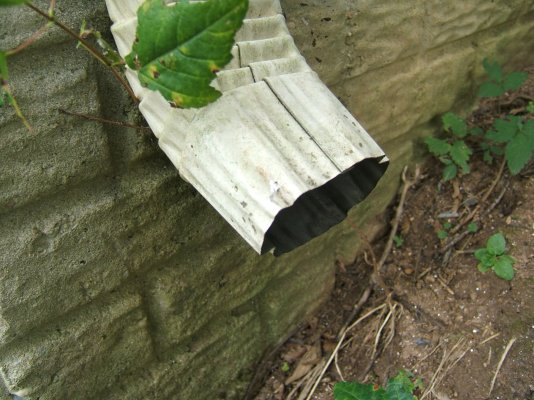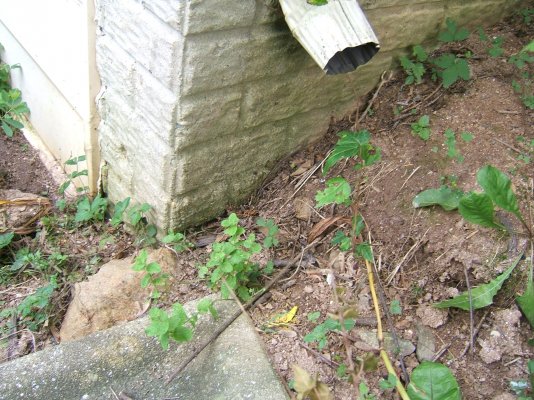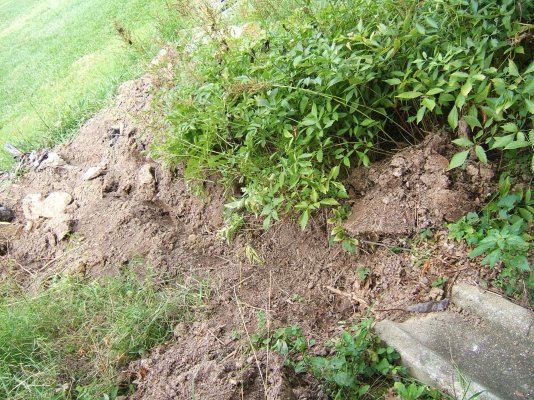Amethyst
Give me a museum and I'll fill it. (Picasso) Give me a forum ...
- Joined
- Dec 21, 2008
- Messages
- 12,668
We have a drainage issue in back of our home. The rain gutters do their job, but over the years the house has sunk a bit, and rainwater pools around the foundation. See attached photos.
The solution, we've been told, is to get rid of the concrete splashblock, and install underground drainpipes connected to pop-up drains concealed in the lawn. I've gotten the general idea from some videos, and wanted to be sure we buy the right items and do a good job.
There is a modest slope from the foundation to the grass, which is 11 feet away. The plan is to put a round adaptor on the end of the drainpipe and fit it into a 12-foot length of non-perforated flexible plastic pipe* (can't get rigid pipe that long into our small car). From the drainpipe opening, bend the plastic pipe into a shallow trench leading into the grassy area. Attach a round plastic pop-up drain, with its adaptor, to the far end of the plastic pipe, and fill in the trench to bury the pipe and leave the round, flat top of the pop-up drain flush with the grassy area.
*Don't want to use perforated plastic pipe (which we actually have in our shed) because want the full force of the water to push any sediment from gutters into the end of the system...not dissipate along the way, possibly leaving sediment in the pipe.
What is this scheme missing? Do we need to put gravel in the trench or under the pop-up?
Thanks very much,
Amethyst
The solution, we've been told, is to get rid of the concrete splashblock, and install underground drainpipes connected to pop-up drains concealed in the lawn. I've gotten the general idea from some videos, and wanted to be sure we buy the right items and do a good job.
There is a modest slope from the foundation to the grass, which is 11 feet away. The plan is to put a round adaptor on the end of the drainpipe and fit it into a 12-foot length of non-perforated flexible plastic pipe* (can't get rigid pipe that long into our small car). From the drainpipe opening, bend the plastic pipe into a shallow trench leading into the grassy area. Attach a round plastic pop-up drain, with its adaptor, to the far end of the plastic pipe, and fill in the trench to bury the pipe and leave the round, flat top of the pop-up drain flush with the grassy area.
*Don't want to use perforated plastic pipe (which we actually have in our shed) because want the full force of the water to push any sediment from gutters into the end of the system...not dissipate along the way, possibly leaving sediment in the pipe.
What is this scheme missing? Do we need to put gravel in the trench or under the pop-up?
Thanks very much,
Amethyst



